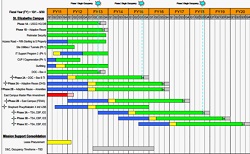Schedule Delay Analysis
Modeled Methods — Additive & Subtractive
Like engineering, CPM scheduling is both an art and a science. CPM scheduling delay analysis techniques allow the analyst to distinguish critical delays from non-critical delays and calculate their impact on the project duration, identify concurrent delays that did or would have delayed the project completion and differentiate between concurrent and pacing delay. When choosing a method there are a number of technical, practical and legal considerations that a delay analyst makes.
This presentation focuses on those methodologies referred to in the industry as "modeled" methods. It will explore the performance of a credible delay analysis and identify many of the strengths and pitfalls of these methodologies.
This informative program will help you:
- Understand and distinguish between the forensic schedule analysis modeled methodologies
- Become familiar with the use of the modeled methodologies that "add" activities to the schedule to model events, such as the Impacted As-Planned and the Retrospective TIA
- Discover the nature of the Impacted As-Planned, the limited circumstances in which one can implement such an analysis, and the difficulties in doing so
- Review the uses, benefits, and problems with implementing a Retrospective TIA, including the contractual reasons why one may be necessary
- Learn about the use of the modeled methodologies that “subtract” activities from the schedule to create a “but for” view of a project — commonly called the Collapsed As-Built
- Identify the strengths and pitfalls of the Collapsed As-Built
Listen to our scheduling expert to learn more about the fascinating topic of risk-adjusted schedules for both improved project management as well as potential delay analysis applications.
Presented by Patrick Kelly, Navigant Consulting’s Global Construction Practice

